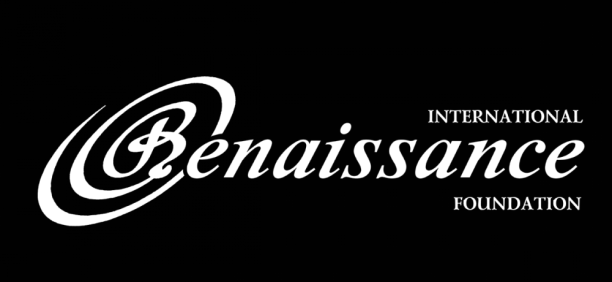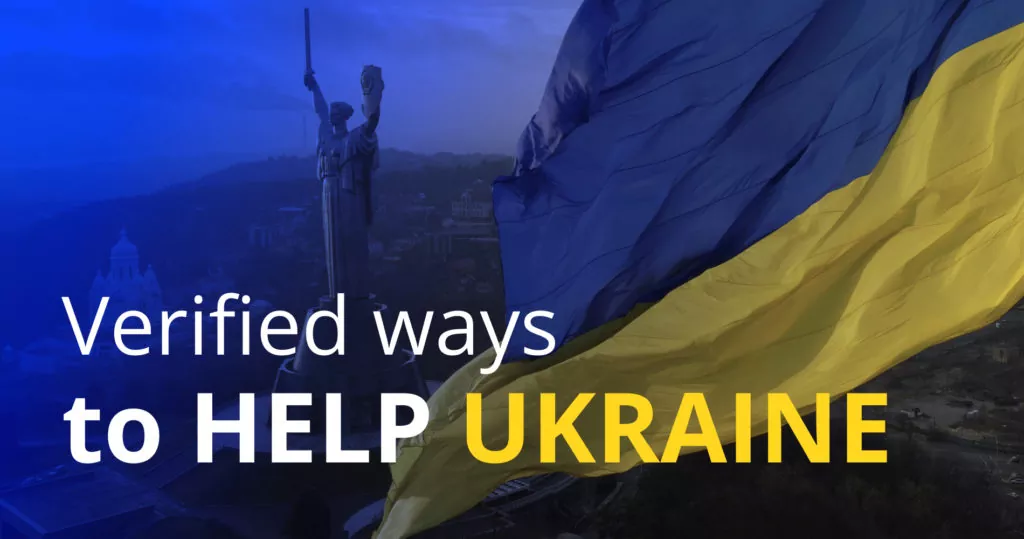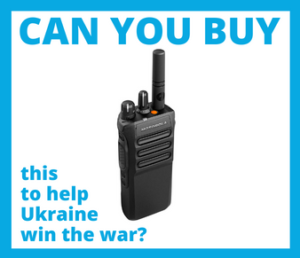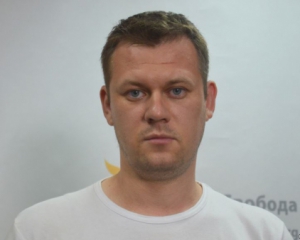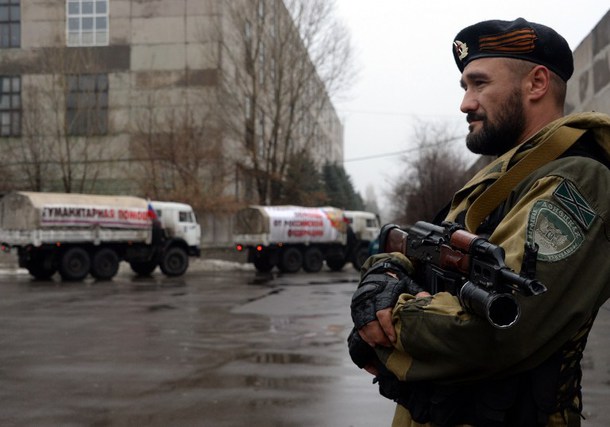Hello and welcome to Head-to-Head. It’s Vivica Williams and today we’re talking with Paul Niland, a political commentator based here in Kyiv. We’ll be talking about two cities and understanding what’s going on with the war in the East by understanding histories of these two cities. Thank you so much for being with us today Paul.
Thanks again for inviting me to the show.
So I was recently reading an article you wrote and I had a lot of questions about this. And you were saying—to understand the history of what’s going on in the East we need to understand the history of these two cities, Sloviansk and Kharkiv. Why these particular cities?
I think the most important thing about these two cities is that in general they’re at peace today and there were significant events in both of those cities in the early days of the creation of this conflict. Sloviansk was the epicenter of the war, that was the first city that was taken over, that was the stronghold of the group that was led by Russian citizen Igor Girkin (“Strelkov” his nom de guerre was), and that was his base. And Sloviansk was liberated by the Ukrainian army in June 2014…Sloviansk was the epicenter of the war.
And when was it taken over? So let’s come up with a picture—when was this?
It was taken over within a very short period after the success of the anti-corruption and pro-democracy revolution that happened mainly in Kyiv, but not only in Kyiv.
And also Crimea—this whole period going on where you had the annexation of Crimea, start of this war…
Exactly. And I think, if you bring Crimea into the picture, it was very important for Russia. Because the narrative that had been played out on Russian internal TV and the external channels like RT and the media like Sputnik was rubbishing the revolution as it was ongoing. They were talking about “extremists” and things that were just made up.If you want to begin to resolve this conflict, the first thing that you have to do is to be clear about its origins.
But then, after the success of the revolution, when Yanukovych fled, they needed to change the narrative. The first thing that happened was Crimea, which you mentioned. But then the war in eastern Ukraine started… We see what’s happening every day, there are Ukrainians and Russians, somebody’s sons, as well as somebody’s fathers probably, people on both sides that are dying every day. And it’s not enough just to simply look at the conflict as it stands and talk about the facts of the matter today and what’s happening on the ground.
If you want to begin to resolve this conflict, the first thing that you have to do is to be clear about the origins of the conflict. And so this is why I wrote about Sloviansk and this is why I wrote about Kharkiv. And Sloviansk, as we said, at one point was the epicenter of the war, that was where it was happening.
So it first started… How far away is Sloviansk from Donetsk and how we see this movement coming across?
If you take a look at a map of eastern Ukraine, you’ll see that Sloviansk is basically equidistant north of Donetsk and the same kind of distance from the city of Luhansk as well. So if you imagine Sloviansk then it is to the south of Kharkiv. And so the reason why that was the first place that was chosen for the beginning of the military operation was its strategic location in the middle of those three key cities.
And that’s brought Kharkiv into the picture now as well. During the weekend in the months of April, March, and April [2014], there were street battles on the streets in Kharkiv. And I love Kharkiv, it’s a fantastic city, it’s a place that I’ve been to a few times, and in fact, I’ve been to Sloviansk as well. I traveled around the huge numbers of cities in eastern Ukraine, I did a lot of work out there trying to help some investors, in actual fact, work with a local retail chain who were looking to expand out into all these cities that had populations of a hundred thousand. So I’ve been all around there and that’s why for me it’s kind of personal.Monday through Friday Kharkiv was a normal place. And then, on the weekends, it all flared up.
Read also: Displaced Donbas children rediscover peace in Kharkiv
But Kharkiv I’ve known for some years. I was watching how the world is reacting to the military land grab that was Crimea, and watching things unfolding in Kharkiv as well as seeing street battles, and thinking this is wrong, it’s strange. But the telling factor there was: it was only on weekends…
In Kharkiv?
The street fighting in Kharkiv. Monday through Friday Kharkiv was a normal place and people went about their business, whether they’re studying—it’s a big university city—or going to work or just the normal family lives. And then, on the weekends, it all flared up.
Let’s go back to Sloviansk. What was going on there in that time period?
Well, the outbreak of conflict in Sloviansk came a little after the street fighting that we saw in Kharkiv. But again, my information about what was going on, my perspective about what was going on in Sloviansk comes from various different sources. And one thing is that I’ve been there and so to me it was personal. But another thing is that the parents of friends of mine actually lived in Sloviansk, and so I was getting calls from my friend, saying—“what one earth is happening, can you try and explain this to me?”With the threat that everything will be taken away from you, would you leave with what you could get into a suitcase? That’s how the people of Sloviansk were actually held hostage by the people who came to their city.
And he was relating to me what his parents were saying to him, and I volunteered to drive to the last Ukrainian checkpoint. If they could get out of the city then I would pick them up and bring them back to Kyiv. The offer was communicated to them, and then he came back. They refused because what the people of Sloviansk were being told at the time was: if you leave then the apartment that you live in and everything that you own will be ransacked and stolen.
Read more: The Sloviansk survivors: a psychologist’s assessment
And this older couple, both intelligent and educated… One was actually a professor at a university… Throughout their lives they built up their possessions all around them, and with the threat that everything will be taken away from you, would you leave with what you could get into a suitcase? That’s how the people of Sloviansk were actually held hostage by the people who came to their city.
And interestingly, I went as well to a shelter in Kyiv for internally displaced people and met people from Sloviansk. I was talking to them as well about what was going on. And the phrase that they use, the word that they used to describe the people who were behind the outbreak of hostilities was “bandyty”, bandits. That’s how locals from Sloviansk were talking about the people who came to create a war in their city. But now what you see (and again, this is why I wrote) is a peaceful city.
And so what was the change, why did you write that understanding Sloviansk, the history of what happened with the city, is critical today? What was it that happened, what was the process there?
The catalyst, actually, for writing the article was a good friend of mine, who is a Canadian guy who’s done a lot of work with the training of the patrol police here. He introduced me to an American defense contractor who was trying to get an understanding of what was happening here in Ukraine, trying to understand the war. And so the basis for the article was actually an email that I wrote back to this lady, saying: okay, if you want to understand the conflict, here was the origin, here was the beginning of it.The conflict will only end the day that Russia stops putting men, munitions, equipment across the border which is open.
But also as well, one of my favorite Twitter accounts is @Sloviansk. People in that city, on a daily basis, are tweeting photographs about life in Sloviansk, about parks being cleared up, about children’s recreation facilities that have been painted, about the beautiful city and the lakes and things that are on the outskirts of that city. And every day, it’s a daily reminder that this is a city now at peace.
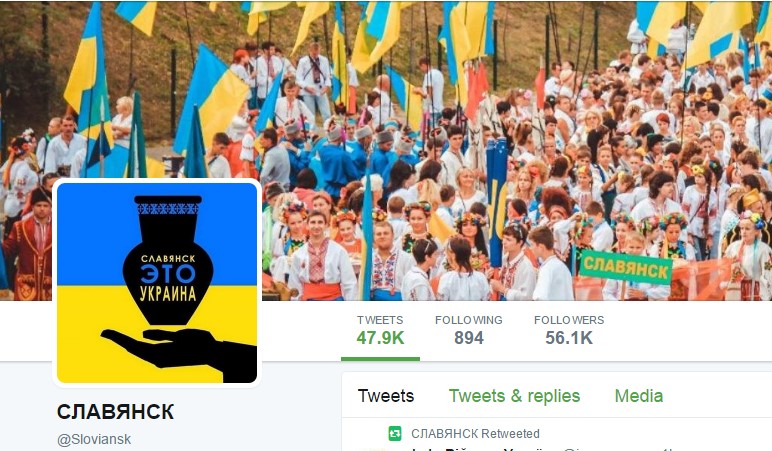
I believe that the rest of Ukraine can actually emulate that as well. And if we look at how quickly after the foreign presence left the city, Sloviansk returned to normal, that is the best example of how I think the rest of Ukraine will return to normal at the end of the conflict. But as I said at the outset, if we want to understand the conflict today, we have to understand where it came from.
I was in a discussion on Sunday evening with some people and the conclusion that we came to is the conflict will only end the day that Russia stops putting men, munitions, equipment across the border which is open. The day that Russia decides to do that the conflict is over and until Russia decides to do that the conflict will continue.
And so an idea behind Sloviansk is showing how quickly the East could return back to a sort of normality, back to peacefulness once this war is ended?
I think that it demonstrates that it is absolutely possible.In Russia, it’s an essential part of the continuation of the Putin regime that they control the way people think.
How quickly will Sloviansk return to a normal way of life? We have to bear in mind that it was only occupied for four months. I say “only” but for the people that were in Sloviansk for those four months there’s not “only.” There was a torturous time in the history of their city.
The cities of Donetsk and Luhansk have now been occupied for three years. When we say “occupied,” we’re not just talking about the people that are holding the locals there hostage the same way as the people of Sloviansk were hostages. The people essentially have no choice. The people who hold power there now do so by virtue of the fact that they’re holding guns and by virtue of the fact that they were installed by the Kremlin. They’ve also conducted an operation to affect the ways of thinking, to affect the minds of people.
We know that in Russia, it’s an essential part of the continuation of the Vladimir Putin regime that they control the airwaves, they control the way that people think. And they’ve done the same in the statelets that they’ve tried to create in eastern Ukraine. One of the very first things that they did—if you look at the kind of infrastructure that was seized in the early days of the conflict—day one, job one: take those TV towers.
Well, absolutely, this is historic, with propaganda, with changing what people see, what they can hear, where they get their information from. So you saw this initially with Sloviansk, when was this starting over with this changing the narrative of things people can hear. What was the period like when we went from the four months of occupation? And how quickly was the city liberated?
It took significant time for the city to be liberated. But what actually happened in the end had been an ongoing battle for several weeks. One day the forces that were there had simply withdrawn from Sloviansk and headed 80 kilometers south to Donetsk. Sloviansk had been the forward operating base. The assumption was that that would be the point from which they would then spread out further. But they had to retreat to Donetsk. And Donetsk at that point became a city at war it hadn’t been prior to that.The crime rate had significantly gone down in Sloviansk. When the foreign forces retreated from Sloviansk, they took with them what had been the criminal clan.
But what was very interesting as well… We talked about the return to normality. Sloviansk now has a new patrol police force that works in that city. I was talking with somebody last summer who had just returned from Sloviansk and he told me that the people there love the patrol police because they’re efficient, reliable, polite, not corrupt. The new patrol police is one of the great successful reforms that Ukraine can talk about.
But the other thing that he said is that as well as the locals loving the patrol police, they also told him that the crime rate had significantly gone down in Sloviansk. When the foreign forces retreated from Sloviansk, they took with them what had been the criminal clan, the organized crime figures. It’s wrong to say that no locals participated in this war. Some locals did but there were people who were involved in organized crime. And so as the forces withdrew from Sloviansk, the local bad guys left with them as well.
So Sloviansk for many reasons is a great example (and something that deserves study) of how the conflict has unfolded and how it changes afterward.
What’s the takeaway then for Sloviansk and for the importance of it?
The simple most important thing is that Sloviansk is a peaceful part of Ukraine. And whereas people were talking about it with the media as a “rebel-held” city, it wasn’t. The term “rebel” denotes somebody who is uprising against their own government. That’s not what happened in Sloviansk. It wasn’t the agency or the energy or the effort of the local population of that city. It was done in spite of them. It was done to them, not by them. And the key takeaway is that today it is a peaceful city.Whereas people were talking about it as a “rebel-held” city, it wasn’t. It wasn’t the agency or the energy or the effort of the local population of that city. It was done in spite of them.
What we could also take away from this, even though it’s been three years of occupation, is that the further parts of the East are not a lost area. These aren’t necessarily people who want to not be part of Ukraine. So our takeaway there as well is that there needs to be some “re-embracing” of people and areas when they do return to Ukrainian government forces.
I think you’re exactly right. Certainly, the areas that are currently occupied are not lost, far from it.
I have many friends from that part of Ukraine, people who are Ukrainian patriots, people from Donetsk who have left their home, left their businesses, came to Kyiv with their families and rebuilt their lives. They still care passionately and deeply not only about their country but about their fellow Donetsk and Luhansk natives.
Many people are there. There’s an example of Professor Kozlovsky in Luhansk who was recently sentenced to two and a half years in prison. He didn’t leave. A well-noted intellectual, a well-respected gentleman in Luhansk who was just recently sent to prison. He didn’t leave because his son has disabilities and he wasn’t able to just uproot his son’s life. There are lots of people like that who are stuck behind enemy lines and who deserve the respect of their country, who deserve their government to be doing everything that they can to reunite the country.There are lots of people stuck behind enemy lines who deserve the respect of their country.
We do hear people say: just let this area go. The fact is that this is Ukraine. It’s still part of Ukraine. There are people who believe that and who want to return to Ukraine.
Now let’s talk about Kharkiv for a little bit. This is the second city you mentioned in the article. So what is it about Kharkiv that we need to understand?
Kharkiv was the second city mentioned in the article. It’s also the second city in Ukraine. Kharkiv is a city of 1.4 million people. It’s a very large place to go.
I was there in September last year. On the main square in Kharkiv (which is an enormous, one of the largest squares in all of Europe) there is a museum of the war. Around the square, there are memorials to citizens of Kharkiv who have gone either as volunteers or joined up with the National Guard or whatever to war for their country.
Read also: Kharkiv says good bye to largest Lenin statue in Ukraine
Kharkiv is a city that’s just 30 kilometers from the border with Russia. And as I wrote in the article, if you look at a predominantly Russian-speaking city, which has very close proximity to Russia, you would think if there was anything to do with closeness to Russia or language issues that were at the root of this conflict. Then you would think that Kharkiv would be gone as well.
There was a time when the authorities in Kharkiv, on the early days after Yanukovych fled, did certainly appear to be flirting with separatism. But at some point, the decision was made that Kharkiv was not going to fall. The people of Kharkiv actually stood up when those street battles went on throughout those weekends. There were people who were bused in, who were the aggressors by and large, 95%. But it was the local people. I remember seeing footage of the time of predominantly younger people, kids in their late teens and early twenties who were standing up and they literally fought for their future.Younger people, kids in their late teens and early twenties were standing up and literally fought for their future.
Absolutely. Kharkiv was a very big stronghold—unexpectedly. People didn’t really expect this much from Kharkiv. It was very adamantly pro-Ukrainian and for staying in Ukraine.
Yes. I said that Kharkiv is Ukraine’s second city. There’s a time in history when Kharkiv was the capital of Ukraine. Because of that, it’s always been very much an intellectual place. There’s also quite a lot of Ukrainian that’s spoken there as well, although the day-to-day language predominantly is Russian. But yeah, the people of Kharkiv stood up when they needed to.
It was another motivation for writing the article that I wrote. My Facebook memories came up with something from three years ago. There was an image from the Kharkiv Observer, from the 11th of May, of a pro-Russian gathering next to the Lenin monument that used to stand on the square.
When you look at that photograph, there were two or three hundred people there. And when I shared that on Facebook three years ago, I wrote: these people were absolutely within their democratic rights to stand there and peacefully talk about their pro-Russian position. But the number of people that gathered there really demonstrates what the actual size of pro-Russian feeling would be in a city of 1.4 million people.
There were two or three hundred people who are standing on the square.
Read more: Russian independent poll: Odesa, Kharkiv not eager to join Russia
Well, this is definitely a great takeaway that Kharkiv remains today pro-Ukrainian and in Ukraine. Despite what Russia would say about language, about needing to protect people of language, there’s no question about that.
Paul, I really wish we had more time to go on with a very fascinating discussion. Thank you so much for joining us today.
I’ll come back.
Read also:
- In memoriam: The Defense of Donetsk Airport (25 May 2014 – 22 January 2015)
- The Donbas syndrome: those who walked through fire
- Deception, Disinformation, and Doubt: Hybrid Warfare in Eastern Ukraine
- Parents bury hero son a second time
- To annex Donbas, Moscow would have to destabilize Ukraine by attacking elsewhere, experts say
- Russian-hybrid forces kill four civilians in Donbas amid Eurovision grand final
- Ukrainian soldiers in war zone display enemy “trophies” gathered after night attacks
- Stages of Russian occupation in a nutshell
- Ukraine isn’t formally at war with Russia. For captured prisoners, this is a problem
- Valentyn Kovalsky: a story of life, war and death

